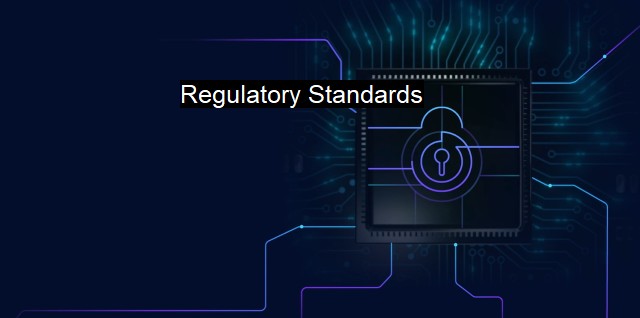What are Regulatory Standards?
The Importance of Regulatory Standards in Cybersecurity and Antivirus: Ensuring Information Privacy and Data Protection
"Regulatory standards" in the context of cybersecurity and antivirus describe the rules and guidelines that cyber-based entities should adhere to, with the aim to ensure secure exchange and protection of data. It incorporates internationally recognized procedures and norms aimed at minimizing the scope of cyber threats and maintaining the integrity, availability, and confidentiality of data and information systems. These standards set the bar for maximum permissible risk mitigation while transferring and storing critical information, which is especially crucial to preventing unauthorized access, data breaches, and maintaining public confidence in internet-based solutions.While the cybersecurity landscape presents an ever-evolving array of threats, regulatory standards provide a framework for best practices, constant improvements, and adjustments. Several organizations worldwide are proactively defining such standards. Key among them are the National Institute of Standards and Technology (NIST), International Organization for Standardization (ISO), and the International Electrotechnical Commission (IEC).
ISO/IEC 27001, for instance, is a frequently adopted set of standards centered on information security management. It outlines requirements for developing, implementing, and maintaining an information security management system (ISMS) within an organization. While each enterprise's ISMS level could slightly differ, the general requirements suffice to guarantee the provision of reliable and secure information processing.
On another note, regulatory standards are not solely limited to information and data security measures. They extent to antivirus utilization as well. Several world-renowned antivirus human interface tools like Norton, BitDefender, or Avast have been compelled to adgere strictly to the guidelines established in ISO 9241. The primary reason is to facilitate user-centered designed models, whilst maintaining optimal effectiveness in tackling digital threats and vulnerabilities.
Regulatory standards help enforce responsibility and accountability on the cybersecurity custodians, i.e., the organizations which house, transfer, or are in any way responsible for sensitive digital data. Non-compliance with these standards can result in legal ramifications.
Satisfying regulatory standards should not be an organization's only goal in setting up antiviral and cybersecurity systems. The solely compliance-focused agenda might cripple an organization's innovation efforts because it might inhibit the exploration of advanced methodologies that stretch over the regulatory threshold, but offer superior solutions. Also, attaining regulatory compliance does not necessarily equate to achieving cyber immunity. Realistically, there will always be some risk potential, regardless of the employed security measures.
So, while compliance with these standards indeed provides a considerable layer of protection, organizations should continually strive to adopt innovative technologies and practices to remain at the forefront of this digital age. Where resources make it possible, they should invest in comprehensive preventive mechanisms over and beyond conforming to regulatory standards.
It is also critical to remember that regulatory standards are often designed and developed universally. due to the unique nature of security threats among different regions and sectors, customization based on who or what you are – a small business owner, a global enterprise, or a healthcare provider – would always be key to optimal cyber defense system designs.
Regulatory standards in the field of cybersecurity and antivirus provide valuable rules and guidelines for the best practices in this field. Implementing them effectively can spare an organization the pains associated with data breaches. With it being almost impossible to negate cyber threats entirely, periodic updates of these standards, their compliance, and striving for advanced protection methodologies, even after compliance, will remain pivotal in securing sensitive digitized data assets now and in the foreseeable future.

Regulatory Standards FAQs
What are regulatory standards in cybersecurity?
Regulatory standards in cybersecurity are a set of guidelines and requirements established by regulatory bodies to ensure that organizations' cybersecurity measures are adequate to protect sensitive information from cyber threats.What is the role of regulatory standards in antivirus protection?
Regulatory standards play a crucial role in antivirus protection by defining the minimum requirements for antivirus software to effectively combat cyber threats. These standards help ensure that antivirus software is regularly updated and capable of identifying and mitigating the latest security threats.Which regulatory standards are relevant to cybersecurity and antivirus protection?
Several regulatory standards are relevant to cybersecurity and antivirus protection, including the Payment Card Industry Data Security Standard (PCI DSS), General Data Protection Regulation (GDPR), and the National Institute of Standards and Technology (NIST) Cybersecurity Framework.What are the consequences of not complying with regulatory standards in cybersecurity and antivirus protection?
Failing to comply with regulatory standards in cybersecurity and antivirus protection can result in severe consequences, including fines, legal action, and damage to an organization's reputation. Non-compliance can also leave organizations vulnerable to cyber threats, leading to data breaches, system downtime, and loss of sensitive information.| | A | | | B | | | C | | | D | | | E | | | F | | | G | | | H | | | I | | | J | | | K | | | L | | | M | |
| | N | | | O | | | P | | | Q | | | R | | | S | | | T | | | U | | | V | | | W | | | X | | | Y | | | Z | |
| | 1 | | | 2 | | | 3 | | | 4 | | | 7 | | | 8 | | |||||||